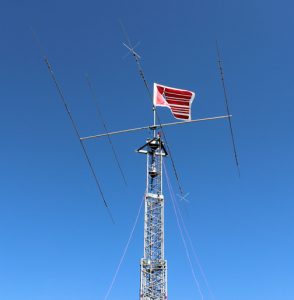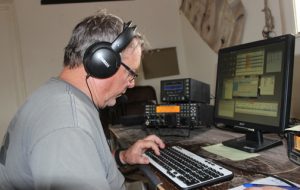Hello to all interested in chasing grids on 6M. The K5N group is
planning a grid DXpedition to three of the most wanted grids in the Big
Bend region of Texas. We are planning to activate DL79, DL89, AND
DL88. Our plans are NOT completely final, but here is the best estimate
that I can give at this point.
Arliss-W7XU, Bill-N5YA, and myself-K5QE will depart east TX on July the
2nd and drive to Study Butte, TX. We believe that we will arrive late
on the afternoon/evening of July 3rd. However, it is quite possible that
we will not get there until mid-day of the 4th of July. We will
probably setup in the evening of the 4th, when it is not so hot. So, it
is possible that we will be on the air the evening of the 4th. If not,
we will finish setup on the 5th and then get on the air then. The RV
park supposedly has WiFi, but I have been told that it is “spotty”.
That probably means that it does not work….HI.
Dan-N5TM is planning to drive over on the 5th, but will not arrive until
the evening. Kyle-KA5D and Ivan-KG5UNR will arrive on the evening of
July 6th(Saturday).
After I am firmly established in DL89, Arliss and Bill are going to
drive down to DL88 and put that on the air. There will be NO cell or
Internet in DL88, so you will just have to watch out for them. I should
be able to post when they leave, but I will not be able to tell when
they actually arrive OR when they are able to get on the air.
I believe that Arliss and Bill will return to Study Butte on the 8th of
July to help us pack and move to DL79. Again, this is NOT the final
word on all this, it is just as close as I can estimate.
Assuming all of the above, we will move to Presido, TX on the evening of
the 8th. We will setup on the morning of the 9th. In Presidio, we will
have Internet, either via the RV park or via an AT&T hot spot. On the
morning of the 13th, we will tear down and begin the long drive home.
We have not decided on which calls we will use. Remember, we will have
two stations on the air at the same time. While I have secured our
traditional K5N call from July 6th to July 13th, we cannot use that call
for both places at the same time, because there would be mass confusion
about which grid folks were working. I have applied for the K5N call
from July 3rd to July 5th, so we could use that call for the entire time
we were down there. ARRL is being a bit slow on that, however. We have
not decided on the frequencies we will use. Some have suggested that we
just get into the pile and run FT8 on 50.313MHz. Others say that we
should adopt a frequency close to that but not right on .313. Of
course, we are hoping for a big Es opening while we are down
there…most especially for Arliss and Bill while they are in DL88. I
cannot speak for the DL88 crew, but when FT8 and Es are dead, we will
entertain the troops with meteor scatter using MSK144, most probably on
50.260MHz.
This is the best that I can come up with right now. Things can and
probably will change. Hopefully, the changes will be small.
73 es GL….the K5N Team
Arliss-W7XU
Bill-N5YA
Dan-N5TM
Kyle-KA5D
Ivan-KG5UNR
Marshall-K5QE


